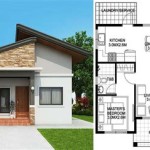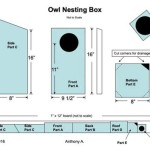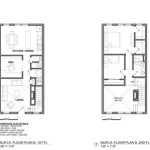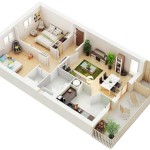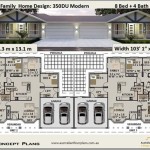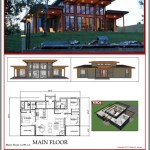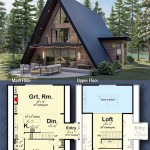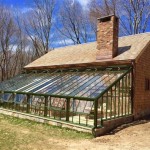Tiny House On Wheels Floor Plans Without Loft
The tiny house movement has gained significant traction, driven by a desire for simplified living, financial freedom, and environmental consciousness. While many associate tiny houses with lofts for sleeping areas, a growing number of individuals are opting for tiny house on wheels (THOW) floor plans that eliminate the loft altogether. This article explores the compelling reasons behind this design choice and delves into various floor plan options that maximize space and functionality without relying on a loft.
Accessibility and Safety Considerations
One of the primary motivators for choosing a tiny house on wheels without a loft is improved accessibility and safety. Lofts, while providing sleeping space, often require climbing a ladder or steep stairs. This can be problematic for individuals with mobility limitations, older adults, or families with young children. Navigating a ladder, especially in the middle of the night, presents a fall risk. A single-level design eliminates this risk, offering a safer and more comfortable living environment for a wider range of individuals. The reduced risk of injury associated with accessing the sleeping area is a significant advantage for those prioritizing long-term safety and universal design principles.
Furthermore, lofted sleeping areas often suffer from limited headroom, which can contribute to feelings of claustrophobia and discomfort. Individuals who are particularly tall may find it physically uncomfortable to stand or even sit upright in a loft. A loft-free design allows for higher ceilings throughout the tiny house, creating a more spacious and open feel. Avoiding the cramped feeling of a loft encourages greater functionality within the sleeping space.
From a building perspective, the elimination of a loft can also simplify the construction process. Building a structurally sound loft requires careful planning and execution to ensure it can support the weight of occupants and furniture. Removing the loft reduces the complexity of the framing and structural engineering, potentially leading to lower construction costs and a faster build time. It also provides greater flexibility in terms of roof designs and overall aesthetics, as the elimination of the loft removes constraints on the roof pitch and height of the walls.
Maximizing Space in Single-Level Tiny Houses
Designing a tiny house on wheels without a loft requires careful consideration of space optimization. Every square inch must be utilized strategically to accommodate essential living areas such as the kitchen, bathroom, living area, and sleeping area. The key is to prioritize multi-functional furniture, clever storage solutions, and efficient layouts that minimize wasted space.
One common approach is to incorporate a ground-floor bedroom. This can be achieved in several ways, depending on the overall size and layout of the tiny house. A dedicated bedroom can be enclosed with walls for privacy, or it can be designed as a more open living space with a Murphy bed or a convertible sofa bed. Murphy beds are particularly effective for maximizing space, as they can be easily folded away during the day to create a larger living area. Sofa beds offer a similar advantage, providing a comfortable seating area that can be quickly transformed into a sleeping space at night.
Beyond the sleeping area, creative storage solutions are crucial for maintaining a clutter-free environment. Built-in storage compartments under the floor, in benches, and along walls can provide ample space for storing clothing, bedding, and other belongings. Utilizing vertical space is also essential. Tall, narrow cabinets and shelving units can maximize storage capacity without taking up valuable floor space. Consider incorporating pull-out drawers and organizers to make it easier to access stored items. Another innovative approach is to create a raised platform for certain areas, such as the kitchen or bathroom, and use the space underneath the platform for storage.
The layout of the tiny house should be carefully planned to ensure a smooth flow between different living areas. An open-concept design can create a sense of spaciousness, while strategically placed partitions or furniture can define distinct zones without making the space feel cramped. Consider the placement of windows and doors to maximize natural light and ventilation, which can further enhance the feeling of spaciousness. Natural light helps to make spaces feel larger and more inviting.
Floor Plan Options for Loft-Free Tiny Homes
Several floor plan options effectively utilize space in tiny houses on wheels without lofts, each catering to different needs and preferences.
The "Open Concept Studio" layout is a popular choice for individuals or couples who value simplicity and flexibility. This design typically features a single, open living area that incorporates the kitchen, living area, and sleeping area. Multi-functional furniture, such as a sofa bed or a Murphy bed, is essential for maximizing space. This layout is best suited for those who are comfortable with a more minimalist lifestyle and don't require a lot of privacy between different living areas.
A "Separated Bedroom" layout offers more privacy and a better sense of separation between the sleeping area and the living area. This design typically includes a dedicated ground-floor bedroom that is enclosed with walls and a door. The bedroom may be small, but it provides a private and comfortable space for sleeping and relaxing. The remaining space in the tiny house is then dedicated to the kitchen, bathroom, and living area. This layout is ideal for individuals or couples who value privacy and prefer a more traditional bedroom setup.
Another option is the "Flex Space" layout, which incorporates a multi-functional area that can be used for a variety of purposes. This area might serve as a home office, a guest bedroom, or a hobby space. It can be equipped with a fold-down desk, a convertible sofa bed, or other flexible furniture that can be easily adapted to different needs. The flex space provides versatility and allows the tiny house to be customized to the owner's specific lifestyle. This layout is particularly well-suited for individuals who work from home or who have hobbies that require a dedicated space.
For families with children, a "Bunk Bed" layout can be an effective way to accommodate multiple sleepers. This design features a set of built-in bunk beds that provide sleeping space for two or more children. The bunk beds can be integrated into a dedicated bedroom or incorporated into the main living area. This layout requires careful planning to ensure that the bunk beds are safe and comfortable for children of all ages. It's also important to consider the overall height of the tiny house to ensure adequate headroom for the top bunk.
Finally, the "Downstairs Master" layout prioritizes a spacious and comfortable sleeping area for the primary occupants. This design features a larger ground-floor bedroom that can accommodate a queen-sized or even a king-sized bed. The bedroom may also include additional features such as a walk-in closet or a seating area. This layout sacrifices some space in other areas of the tiny house, but it provides a luxurious and relaxing sleeping environment for those who value comfort above all else.
Regardless of the chosen floor plan, careful planning and attention to detail are essential for creating a functional and comfortable tiny house on wheels without a loft. By prioritizing accessibility, maximizing space, and choosing the right layout, individuals can enjoy the benefits of tiny living without sacrificing comfort and convenience.

Tiny House Floor Plan With No Loft Plans Small Cabin

117 Sq Ft No Loft Tiny Home Tumbleweed Elm 20 Horizon House Pins

Tortoise S Floor Plan For An 8x32 No Lofts And Steps Ladders But Very L O N G Diy Tiny House Plans Building A

Tiny House Floor Plans 32 Long Home On Wheels Design

224 Sq Ft Tiny House On Wheels By Living Homes Diy Small

Tiny House Floor Plans 32 Home On Wheels Design

Tiny Houses Without Lofts House Blog

Top 10 Tiny Houses On Wheels With Downstairs Bedrooms

Why You Need A One Story Tiny House Without Loft The Life

27 Adorable Free Tiny House Floor Plans Craft Mart
Related Posts

